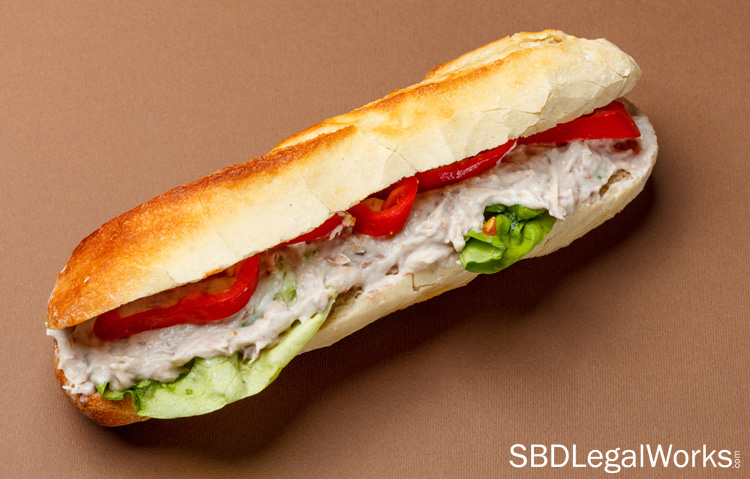
What are you actually eating when you order a Subway tuna fish sandwich?
That question is at the heart of a new lawsuit filed against the sandwich retailer in a northern California federal court in November 2021. It’s a claim that has been categorically denied by the defendant and has the potential to make the Subway tuna lawsuit one of the more interesting and contested cases on the civil docket.
The claim
The plaintiffs in Amin et al v Subway Restaurants Inc. originally filed a lawsuit, saying that the relevant Subway products—salads, sandwiches and wraps were “bereft” of tuna. The second version was amended to say simply that the products were not 100 percent tuna.
While the charge in the second version was milder, it was still damaging to Subway, which advertises its products as being 100 percent tuna.
A district judge dismissed that case, but the dismissal was based on standing rather than the merits of the lawsuit. Judge Jon Tigar ruled simply that there was no evidence that the defendants purchased the products because of the alleged misrepresentations.
But Karen Amin didn’t go away quietly. Instead, she has assembled an impressive array of expert testimony.
Relying on testing by marine biologists at UCLA’s Department of Ecology & Evolutionary Biology, Amin’s third lawsuit says that 19 of 20 Subway tuna samples have “no detectable tuna DNA sequences.” Meanwhile, chicken DNA was detected in all 20 samples, with pork and cattle in at least some of the sampled products.
Subway is charged with not taking “sufficient measures to control or prevent the known risks of adulteration to its tuna products. On the contrary, they actively perpetuate actions and steps that encourage mixing or allowing non-tuna ingredients to make their way into the tuna products.”
The defense
Subway wasted no time in launching its defense, not just in the court of law, but in the court of public opinion. A new page on their website firmly proclaims that “Subway tuna is real tuna.”
Their public statement further called the lawsuit “reckless and improper,” noted that the plaintiffs had changed their story in the course of the filing and cited their regulation by the Food & Drug Administration (FDA) in the United States and by other governments worldwide.
Subway is backed up by its supplier, Rema Foods, who said: “We can confirm that Subway uses only 100 percent caught wild tuna.”
But isn’t the DNA evidence uncovered by UCLA ironclad evidence? Perhaps not in this case. Subway cites science authorities who acknowledge that testing processed tuna DNA is a “challenge.”
The cooking and packaging process breaks down DNA fragments, making this evidence less reliable than it might be in cases involving human beings giving the police a DNA swab.
Where to go from here?
The debate over different interpretations of scientific data promises fascinating expert witness testimony should this case ultimately reach trial. However, one question does linger and it’s the issue of damages.
Even if Amin wins her case, how much financial damage will she be able to reasonably claim?
The path to not only a victory, but a meaningful legal victory, is one that is long but not impossible for the plaintiff.